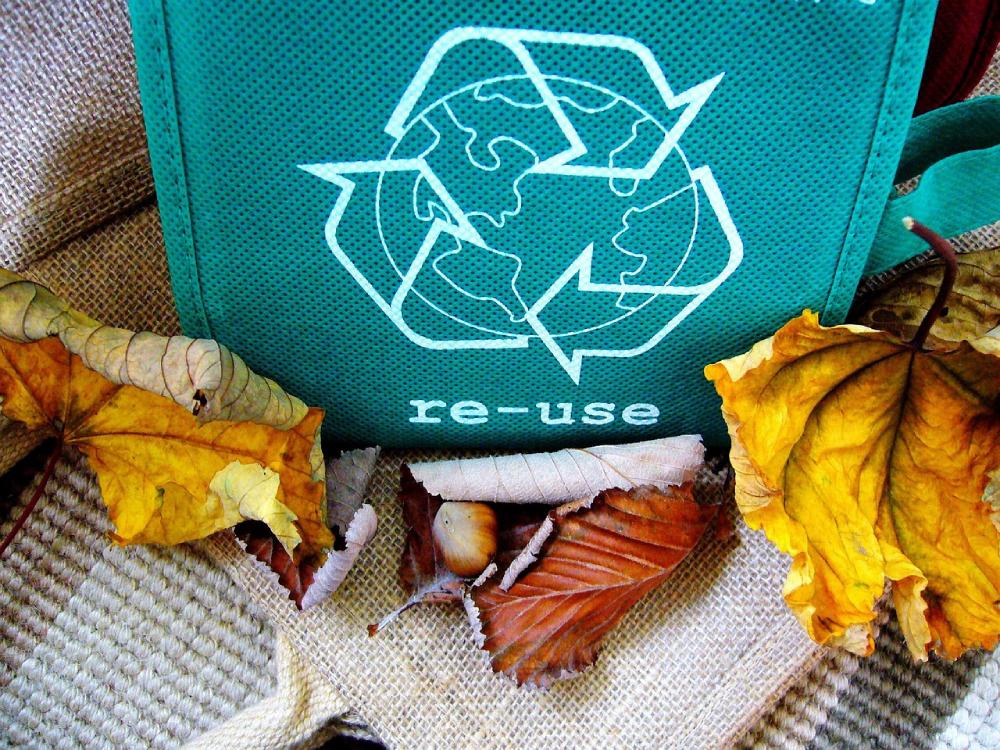Introduction
The rapid advancement of technology and the increasing consumption of electronic devices have led to a concerning issue: Electronic waste is commonly known as e-waste. E-waste refers to discarded electrical or electronic devices, including smartphones, laptops, televisions, and other gadgets. Improper e-waste management poses significant environmental risks and challenges, making it crucial to address this issue to protect our planet.
The Issue of Electronic Waste
The proliferation of electronic devices has resulted in a staggering amount of e-waste generated worldwide. According to the Global E-waste Monitor 2020, approximately 53.6 million metric tons of electronic waste were generated globally in 2019 alone. This number is expected to increase significantly in the coming years, driven by the growing demand for electronic products and the shortened lifespan of devices due to technological advancements.
The disposal of electronic waste is particularly problematic due to its hazardous components. Many electronic devices contain toxic substances such as lead, mercury, cadmium, and flame retardants. When improperly disposed of, these dangerous materials can leach into the soil, contaminate water sources, and release harmful gases into the atmosphere, posing severe threats to human health and the environment.
Importance of Addressing Electronic Waste
Addressing the issue of electronic waste is of paramount importance for environmental protection. By properly managing e-waste through recycling and responsible disposal, we can mitigate its harmful impacts and promote sustainability in the following ways:
Resource Conservation
Electronic devices comprise valuable resources, including precious metals like gold, silver, and copper. These resources can be recovered and reused through recycling in the production of new electronic devices, reducing the need for extracting raw materials from the Earth. This conserves natural resources and minimizes the environmental damage associated with resource extraction processes.
Pollution Prevention
Improper disposal of e-waste can lead to soil, water, and air pollution. When electronic devices end up in landfills or are incinerated, hazardous substances can seep into the ground and contaminate groundwater, posing risks to ecosystems and human health. Recycling and responsible disposal help prevent such pollution by safely extracting and managing the hazardous components, reducing the potential for environmental contamination.
Energy Savings
Recycling e-waste also offers significant energy savings. Manufacturing electronic devices requires a substantial amount of energy, and by recycling and reusing materials from e-waste, we can reduce the energy consumption associated with producing new devices. Additionally, recycling e-waste requires less energy than extracting and refining raw materials, contributing to energy conservation.
Climate Change Mitigation
The disposal of e-waste contributes to greenhouse gas emissions, primarily through the release of toxic gases during incineration and energy-intensive production processes. By adopting sustainable practices such as recycling and responsible disposal, we can reduce these emissions and mitigate climate change impacts. Proper e-waste management helps to minimize the release of greenhouse gases. It promotes a circular economy approach, where materials are reused instead of discarded.
In conclusion, the issue of electronic waste poses significant environmental challenges, necessitating urgent action. By addressing electronic waste through recycling and responsible disposal can conserve resources, prevent pollution, save energy, and contribute to climate change mitigation. In the following sections, we will explore in more detail the importance of recycling electronic waste and the various approaches to its responsible disposal.
What is Electronic Waste (E-Waste)?
Electronic waste, commonly known as e-waste, is discarded electrical or electronic devices. These devices range from smartphones, computers, and televisions to household appliances, audio equipment, and medical devices. E-waste is a growing concern due to its negative impact on the environment and human health when improperly managed.

Definition and Explanation of Electronic Waste
Electronic waste encompasses any electronic device that has reached the end of its useful life or is no longer wanted or needed. These devices may contain valuable materials and components that can be reused, recycled, or safely disposed of to minimize their environmental impact.
Common Types of Electronic Waste and Their Environmental Impact
-
Mobile Phones and Smartphones: Mobile phones and smartphones have become integral to our daily lives. However, their frequent upgrades and short lifespans contribute to the increasing amount of e-waste. Mobile phones contain various components, including precious metals, rare earth elements, and hazardous substances such as lead, mercury, and cadmium. Improper disposal of mobile phones can release toxic substances into the environment, posing risks to both ecosystems and human health.
-
Computers and Laptops: With the rapid advancement of technology, computers, and laptops quickly become outdated, leading to their disposal. These devices contain valuable materials like gold, silver, and copper and hazardous components such as lead and brominated flame retardants. When not properly recycled or disposed of, computers and laptops can contaminate soil and water and release harmful gases during incineration.
-
Televisions and Monitors: The transition from traditional cathode-ray tube (CRT) televisions to flat-screen LCD, LED and plasma TVs have resulted in a significant increase in e-waste. Older CRT TVs contain toxic materials like lead, cadmium, and phosphorous. In comparison, newer flat-screen TVs contain mercury and other hazardous substances. Improper disposal of these devices can release harmful substances into the environment and pollute soil and water.
-
Household Appliances: Appliances such as refrigerators, washing machines, and air conditioners contain electronic components contributing to e-waste. These devices often contain refrigerants, oils, and other chemicals that can be harmful if not properly managed. Additionally, the improper disposal of appliances can release greenhouse gases and contribute to climate change.
-
Batteries and Small Electronics: E-waste includes smaller devices like batteries, chargers, and other electronic accessories. Batteries, especially rechargeable ones, contain heavy metals such as lead, cadmium, and mercury, which can contaminate the environment if disposed of incorrectly. Small electronics like digital cameras, MP3 players and handheld gaming devices also contribute to e-waste due to frequent replacement and disposal.
The environmental impact of electronic waste is significant due to the hazardous materials it contains. When e-waste is improperly disposed of in landfills or incinerated, toxic substances can seep into the soil, contaminate water sources, and release harmful gases into the atmosphere. It is crucial to properly recycle and dispose of electronic waste to minimize its environmental footprint and protect the planet for future generations.
Environmental Impacts of Improper E-Waste Disposal
Improper disposal of electronic waste (e-waste) has significant environmental implications. When e-waste is not managed responsibly, it can lead to pollution of soil, water, and air, the release of hazardous substances, and contribute to climate change.
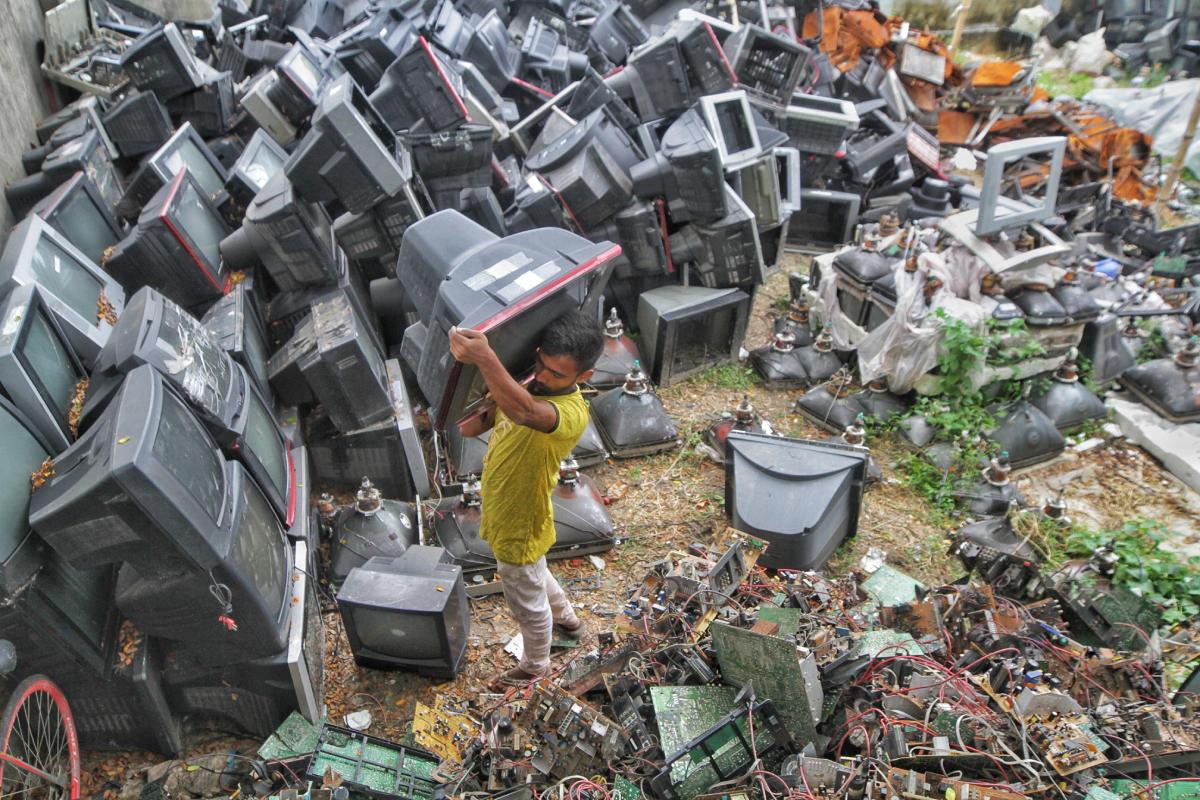
Pollution of Soil, Water, and Air
-
Soil Pollution: Improper disposal of e-waste in landfills or its inappropriate recycling practices can result in soil pollution. Toxic substances such as lead, mercury, cadmium, and brominated flame retardants can leach from e-waste and contaminate the soil. These pollutants can accumulate over time, making the soil unsuitable for agriculture and posing risks to ecosystems and human health.
-
Water Pollution: When e-waste is not properly disposed of or recycled, it can contribute to water pollution. Rainfall can carry leachate from landfills containing harmful chemicals into nearby water bodies. Additionally, improper recycling practices may lead to the improper disposal of e-waste components, including batteries and printed circuit boards, which can release toxic substances into water sources. Water pollution from e-waste can harm aquatic life and contaminate drinking water supplies.
-
Air Pollution: The incineration of e-waste releases toxic gases and pollutants into the air. Burning plastic components or cables can release dioxins and furans, which are highly poisonous and can have long-lasting effects on human health and the environment. E-waste incineration also contributes to air pollution by releasing heavy metals and other hazardous substances into the atmosphere, leading to respiratory problems and other health issues.
Hazardous Substances in Electronic Waste
Electronic waste contains various hazardous substances that pose significant environmental and human health risks if not properly managed. Some of these substances include:
-
Heavy Metals: E-waste often contains heavy metals such as lead, mercury, cadmium, and chromium. These highly toxic metals can persist in the environment for long periods. Improper disposal or inadequate recycling practices can result in the release of these metals into the environment, leading to bioaccumulation in plants, animals, and humans.
-
Brominated Flame Retardants: Many electronic devices, particularly older models, contain brominated flame retardants to reduce fire risk. However, these chemicals are persistent and bioaccumulative, accumulating in living organisms and the environment over time. Improper disposal or recycling of e-waste can release brominated flame retardants into the environment, contributing to their widespread distribution and potentially harmful effects.
E-Waste’s Contribution to Climate Change
E-waste also plays a role in climate change due to its carbon footprint and the release of greenhouse gases. The improper disposal of e-waste in landfills leads to the decomposition of organic materials, generating methane, a potent greenhouse gas. Furthermore, incinerating e-waste releases carbon dioxide (CO2) and other harmful gases into the atmosphere, contributing to the greenhouse effect and global warming.
The environmental impacts of improper e-waste disposal highlight the urgent need for responsible recycling and disposal practices. Adopting proper e-waste management strategies can mitigate pollution, minimize the release of hazardous substances, and reduce our contribution to climate change. In the following sections, we will explore the importance of recycling and responsible disposal methods to address the environmental challenges posed by electronic waste.
Recycling Electronic Waste: Benefits and Process
Recycling electronic waste (e-waste) is crucial for mitigating its environmental impact and promoting sustainable resource management. Recycling e-waste can reduce pollution, conserve valuable resources, and minimize the need for new raw materials. Let’s explore the importance of recycling electronic waste, the e-waste recycling process, and the environmental benefits it offers.
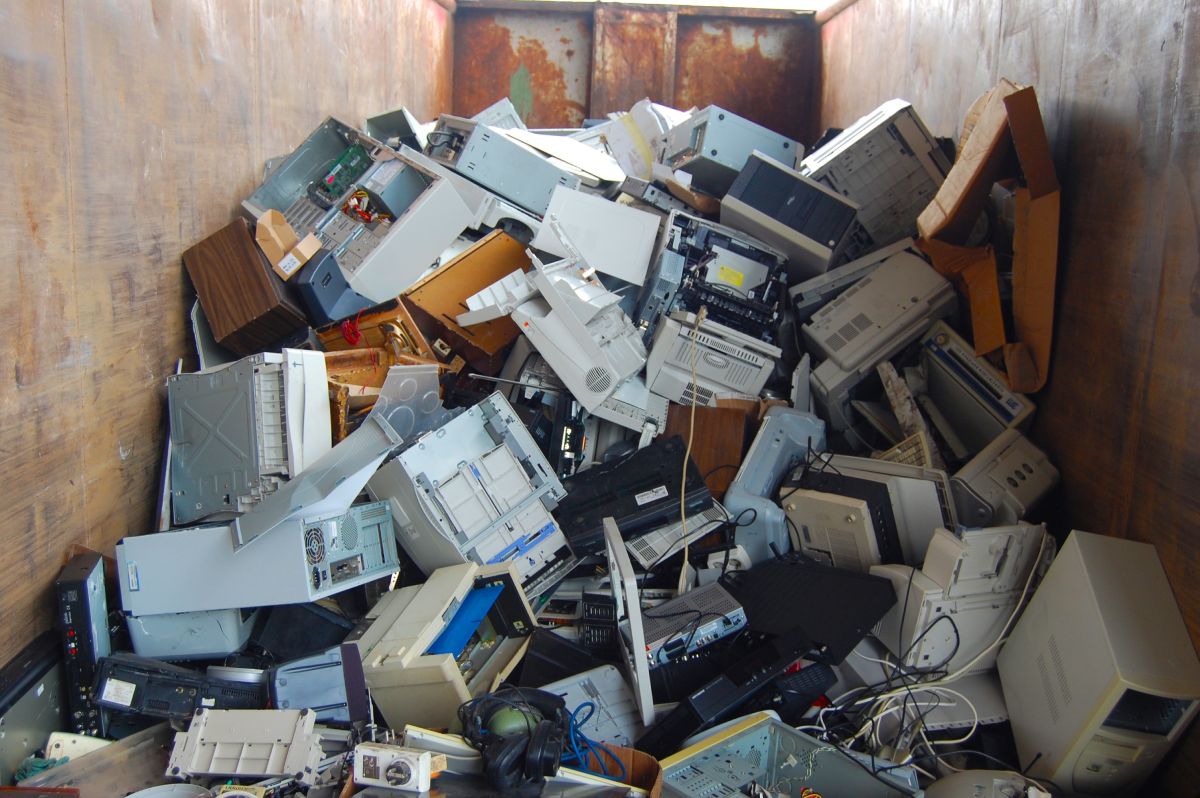
Importance of Recycling Electronic Waste
-
Resource Conservation: Electronics contain valuable resources such as precious metals (gold, silver, platinum), rare earth elements, copper, and aluminum. By recycling e-waste, these resources can be recovered and reused, reducing the demand for virgin materials and the associated environmental impacts of mining and extraction.
-
Hazardous Material Management: Electronic devices often contain hazardous substances, including heavy metals, flame retardants, and toxic chemicals. Proper recycling ensures that these materials are safely extracted and managed, preventing their release into the environment and minimizing human health risks.
-
Energy Saving: Recycling e-waste requires less energy than producing new electronic devices from raw materials. By recycling, we conserve energy and reduce greenhouse gas emissions associated with the manufacturing process.
Overview of the E-Waste Recycling Process
The e-waste recycling process typically involves the following steps:
-
Collection: E-waste is collected from individuals, businesses, and collection centers. This can be done through designated drop-off locations, recycling events, or electronic waste recycling programs.
-
Sorting and Disassembly: Collected e-waste is sorted into different categories based on their components and materials. The devices are then disassembled to separate the various parts for further processing.
-
Component Recovery: Different components, such as circuit boards, cables, plastics, and metals, are recovered through mechanical shredding, magnetic separation, and other specialized techniques. Valuable materials like gold, silver, and copper can be extracted from circuit boards. At the same time, plastics and metals are separated for appropriate recycling.
-
Hazardous Material Treatment: Hazardous substances, including batteries and mercury-containing lamps, are carefully removed and treated to prevent their release into the environment. These materials are often sent to specialized facilities for safe handling and disposal.
-
Material Refining and Recycling: The recovered materials undergo refining processes to remove impurities and prepare them for reuse. Metals and plastics are recycled, while precious metals are typically sent to specialized refineries for further extraction and purification.
-
Manufacturing and Reuse: The recycled materials are used as raw materials in manufacturing new electronic products or other industries. Some components and devices in good condition may be refurbished and resold for reuse.
Environmental Benefits of Proper E-Waste Recycling
Proper e-waste recycling offers significant environmental benefits:
-
Reduced Pollution: Recycling e-waste prevents the release of hazardous substances into the environment. By safely managing and treating hazardous materials, we minimize soil, water, and air pollution, protecting ecosystems and human health.
-
Conservation of Resources: Recycling e-waste reduces the need for raw materials extraction. It helps preserve valuable resources, including metals and rare earth elements, which can be reused in the production of new electronic devices.
-
Energy Conservation: Recycling e-waste requires less energy than extracting and processing raw materials. By conserving energy, we reduce carbon emissions and the environmental impact of energy generation.
-
Landfill Space Reduction: By recycling e-waste, we divert it from landfills, which helps reduce the space needed for disposal and prevents the accumulation of harmful substances in landfills.
Proper electronic waste recycling is essential for minimizing environmental impact and maximizing resource efficiency. In the next section, we will explore responsible disposal methods for e-waste that cannot be recycled and the importance of adopting sustainable practices in electronic waste management.
Responsible Disposal Options for E-Waste
Regarding electronic waste (e-waste), responsible disposal is crucial for minimizing its environmental impact and properly managing hazardous materials. Instead of ending up in landfills, where they can leach harmful substances into the environment, e-waste should be disposed of through responsible and sustainable methods. Here are some options for the responsible disposal of e-waste:
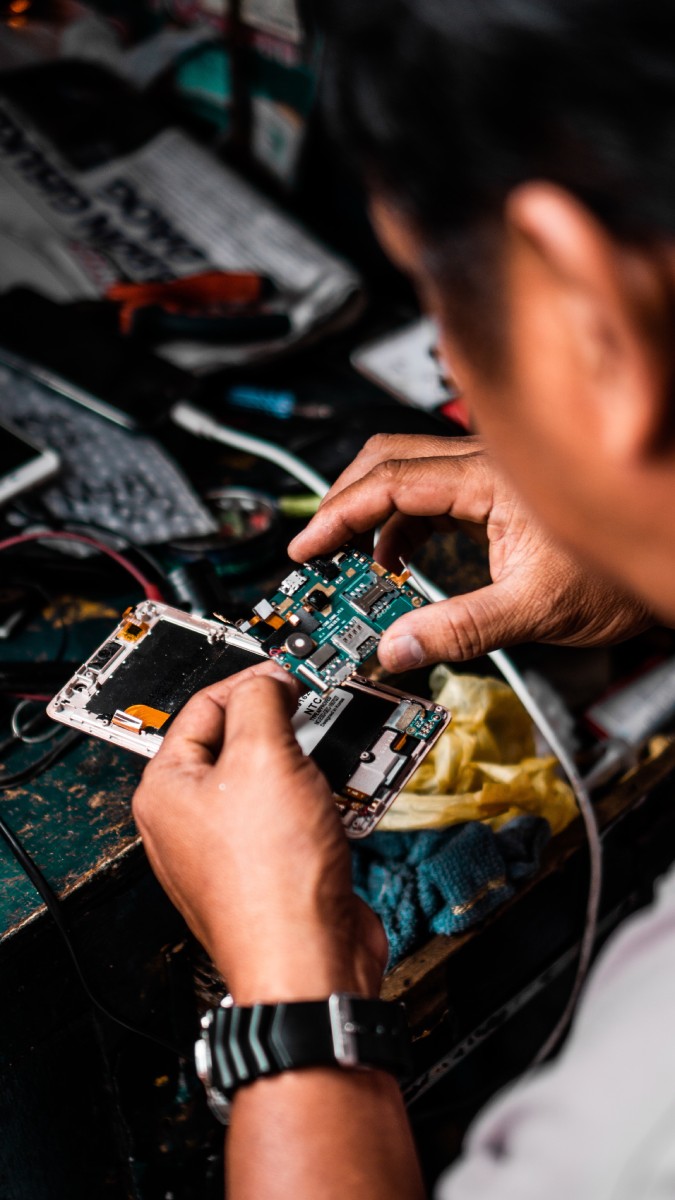
Donation and Reuse of Electronics
Donating and reusing are the most sustainable ways to manage electronic waste. Electronics that are still in good working condition can be donated to needy individuals or organizations. This extends the lifespan of the devices, reducing the demand for new electronics and the environmental impact associated with their production. Charitable organizations, schools, and community centers often accept donated electronics and ensure they are appropriately distributed to those who can benefit from them.
Certified E-Waste Recyclers and Drop-off Locations
Certified e-waste recyclers and designated drop-off locations are essential for ensuring the responsible disposal of electronic waste. These facilities have the expertise and infrastructure to handle e-waste safely and effectively. They follow strict environmental and safety standards to prevent pollution and properly manage hazardous materials.
When choosing an e-waste recycler or drop-off location, look for certifications such as Responsible Recycling (R2) or e-Stewards. These certifications ensure that the facility adheres to rigorous environmental protection and worker safety standards. Many municipalities and organizations have established e-waste recycling programs and provide information on certified recyclers and drop-off locations in your area.
Manufacturer Take-Back Programs
Manufacturer take-back programs are initiatives implemented by electronics manufacturers to ensure the responsible disposal of their products at the end of their life cycle. These programs encourage consumers to return their old devices to the manufacturers for proper recycling or disposal. Manufacturers have the knowledge and resources to handle their products in an environmentally responsible manner.
When purchasing new electronic devices, please inquire about the manufacturer’s take-back program and whether they offer recycling or disposal services for their products. Some manufacturers provide convenient return options, such as mail-in programs or collection events, making it easier for consumers to participate in responsible e-waste management.
Utilizing these responsible disposal options can divert e-waste from landfills and promote a circular economy where valuable resources are recovered and reused. Responsible disposal ensures that electronic waste is handled in an environmentally sound manner, reducing pollution and protecting ecosystems.
In the next section, we will discuss the importance of raising awareness and educating the public about e-waste management and responsible disposal practices.
The Role of Legislation and Policy
Legislation and policy are crucial in addressing the growing issue of electronic waste (e-waste) and promoting responsible disposal practices. Governments worldwide have recognized the need for regulations and initiatives to properly manage e-waste and mitigate its environmental impact.

Government Regulations on E-Waste Management
Many countries have implemented specific regulations and laws to govern the management of e-waste. These regulations aim to establish guidelines for collecting, recycling, and disposing of electronic devices. They often require manufacturers, retailers, and consumers to adhere to specific standards and practices to minimize the environmental impact of e-waste.
Government regulations on e-waste management typically include provisions for safely handling and recycling hazardous materials found in electronic devices. They may also establish targets and deadlines for recycling rates, encourage establishing e-waste recycling facilities, and promote public awareness campaigns on responsible e-waste disposal.
International Agreements and Initiatives
Recognizing the global nature of the e-waste problem, several international agreements and initiatives have been established to address the issue collectively. These agreements encourage cooperation between countries, promote best practices in e-waste management, and facilitate information sharing and technological advancements.
For example, the Basel Convention on the Control of Transboundary Movements of Hazardous Wastes and Their Disposal is an international treaty aimed at reducing the movement of hazardous wastes, including e-waste, between countries. The United Nations Environment Programme (UNEP) also leads initiatives such as the Sustainable Electronics Initiative and the Global E-Waste Statistics Partnership to gather data, raise awareness, and support countries in developing sustainable e-waste management strategies.
Encouraging Extended Producer Responsibility
Extended Producer Responsibility (EPR) is a policy approach that holds manufacturers responsible for the entire lifecycle of their products, including their disposal. By implementing EPR programs, governments shift the responsibility for managing e-waste from consumers to manufacturers. This encourages manufacturers to design products that are easier to recycle, establish take-back programs, and contribute to financing e-waste management initiatives.
EPR policies help create a more sustainable and circular economy by incentivizing manufacturers to adopt eco-friendly practices and reduce the environmental impact of their products. They also support the development of recycling infrastructure and promote innovation in waste management technologies.
Governments can create an enabling environment for responsible e-waste management by implementing comprehensive legislation and policies. These measures ensure the proper handling and disposal of e-waste and encourage the adoption of sustainable practices throughout the entire lifecycle of electronic devices.
Promoting Awareness and Education
Raising awareness and educating the public about electronic waste (e-waste) is essential in promoting responsible disposal practices and minimizing the environmental impact of electronic devices. Individuals can make informed choices and actively contribute to sustainable e-waste management by providing information and resources.
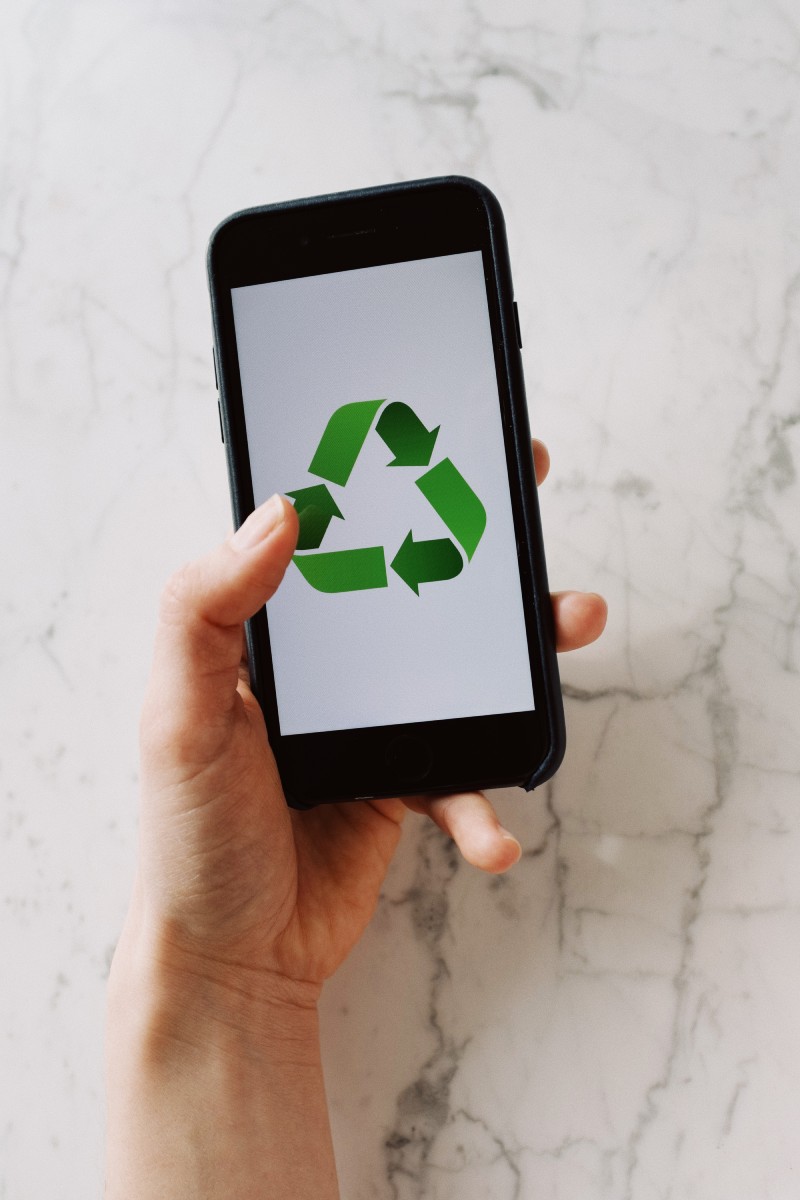
Importance of Educating the Public about E-Waste
Educating the public about e-waste is crucial to increasing awareness and understanding. Many people must be aware of the environmental and health risks associated with improper e-waste disposal. By providing education, individuals can learn about the impacts of e-waste on the environment, human health, and natural resources, motivating them to take action.
Moreover, public education helps dispel myths and misconceptions surrounding e-waste. It highlights the importance of responsible disposal and encourages individuals to explore alternative options beyond simply discarding electronic devices.
Raising Awareness of the Environmental Impact
Raising awareness about the environmental impact of e-waste is a crucial step in promoting responsible disposal practices. By highlighting the consequences of improper e-waste management, such as pollution, resource depletion, and climate change, individuals can better understand the urgency and importance of taking action.
Awareness campaigns can leverage various channels to reach a wider audience, including social media, educational institutions, community organizations, and public service announcements. They can provide information on the proper disposal methods, recycling options, and the potential hazards associated with hazardous materials found in electronic devices.
Providing Resources for Responsible E-Waste Disposal
To facilitate responsible e-waste disposal, it is essential to provide individuals with accessible resources and information. This includes guidance on how and where to recycle electronic devices and information on certified e-waste recyclers, drop-off locations, and manufacturer take-back programs.
Government agencies, environmental organizations, and recycling initiatives can be crucial in providing these resources. They can develop online platforms, mobile applications, and directories that individuals can use to locate the nearest recycling centers or learn about recycling options in their area. Additionally, educational materials, such as brochures and websites, can provide step-by-step instructions on properly disposing of e-waste.
By making resources readily available, individuals are empowered to take action and contribute to responsible e-waste disposal. They can be encouraged to participate in recycling drives, community collection events, and donation programs, thereby reducing the amount of e-waste in landfills or improperly disposed of.
Corporate Responsibility and E-Waste Management
Corporate responsibility plays a significant role in addressing the issue of electronic waste (e-waste) and promoting responsible disposal practices. By implementing sustainable e-waste management strategies, businesses can minimize their environmental impact and contribute to a more sustainable future.

Corporate Initiatives for Responsible E-Waste Disposal
Many companies have recognized the importance of responsible e-waste disposal and have taken initiatives to address this issue. They establish e-waste recycling programs within their organizations, ensuring that electronic devices are properly disposed of at the end of their life cycle.
Corporate initiatives can include establishing collection centers within company premises, organizing employee e-waste drives, and partnering with certified recyclers to ensure safe and environmentally friendly disposal. By implementing these initiatives, businesses not only demonstrate their commitment to environmental stewardship but also provide employees with convenient options for responsible e-waste disposal.
Implementing Sustainable Electronics Procurement Practices
Another crucial aspect of corporate responsibility in e-waste management is adopting sustainable electronics procurement practices. By considering the environmental impact of electronic devices during the procurement process, companies can make informed decisions that promote sustainability.
Sustainable procurement practices involve selecting electronics with longer lifespans, easy repairability, and recyclability. Companies can prioritize products designed for disassembly and containing fewer hazardous materials. Also, choosing energy-efficient devices can reduce energy consumption and greenhouse gas emissions.
By integrating sustainability criteria into their procurement policies, businesses can drive demand for eco-friendly electronics and encourage manufacturers to adopt more sustainable production practices.
Collaboration Between Businesses and Recyclers
Collaboration between businesses and certified e-waste recyclers is crucial for effective e-waste management. By working together, companies can ensure that their electronic devices are handled responsibly at the end of their life cycle.
Businesses can establish partnerships with reputable recyclers to ensure the proper collection, recycling, and disposal of e-waste. These collaborations can involve regular pickups of e-waste from company premises, ensuring the materials are recycled in environmentally sound ways and that any sensitive data is securely destroyed.
Collaborations can also include sharing knowledge and best practices between businesses and recyclers. By working together, they can promote innovation in e-waste management, explore new recycling technologies, and find sustainable solutions for handling electronic waste.
The Future of E-Waste Management
As the issue of electronic waste (e-waste) continues to grow, there is a need for continuous innovation and collaborative efforts to ensure effective and sustainable e-waste management. The future of e-waste management holds promising advancements in recycling technologies and the adoption of circular economy approaches. It requires active participation from individuals, businesses, and policymakers to drive change and create a more sustainable future.
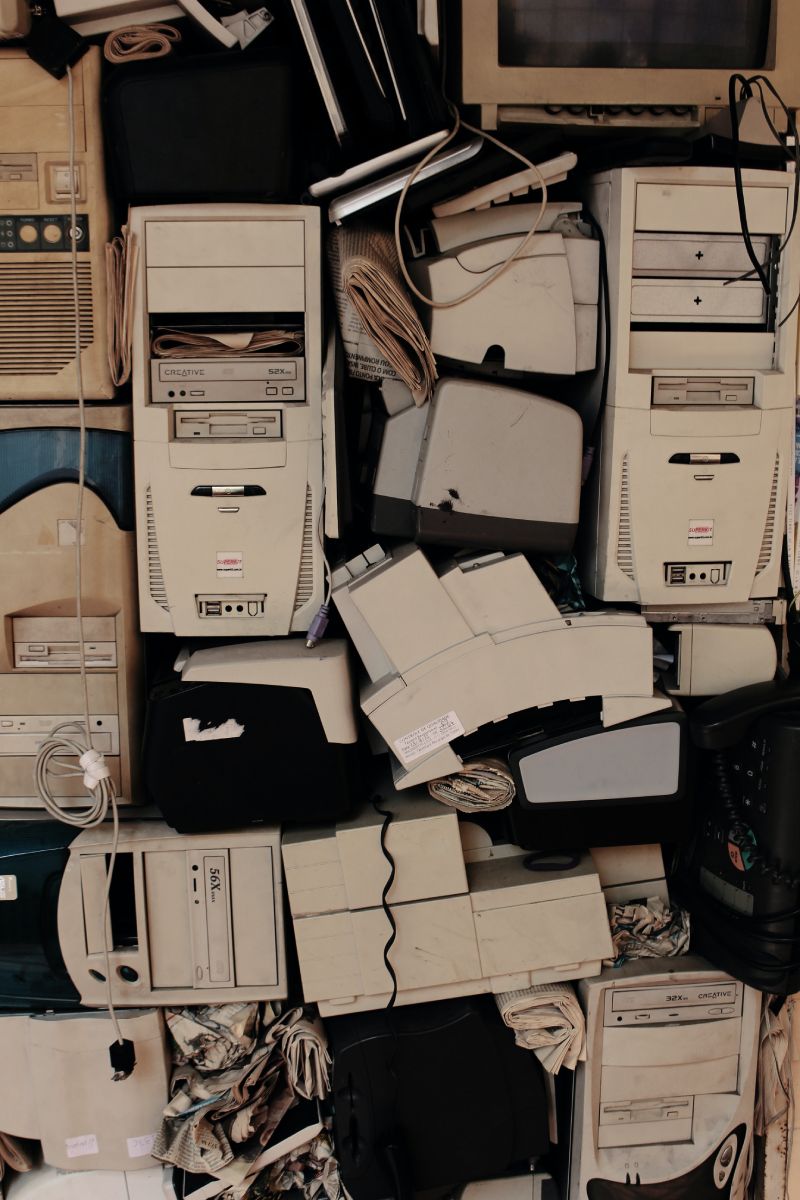
Advancements in E-Waste Recycling Technologies
Advancements in e-waste recycling technologies are crucial for improving the efficiency and effectiveness of e-waste management. Innovations are focused on developing more environmentally friendly and resource-efficient processes for recycling electronic devices.
One area of advancement is the development of improved sorting and separation techniques. Advanced sorting technologies can efficiently separate different materials present in e-waste, such as metals, plastics, and valuable components, allowing for better recovery and recycling.
Additionally, research is being conducted to explore innovative methods for extracting and recovering valuable metals from e-waste. These methods aim to maximize the extraction of precious metals while minimizing environmental impact and reducing the need for mining new resources.
Circular Economy Approaches to E-Waste
The concept of a circular economy offers a promising approach to addressing the challenges posed by e-waste. A circular economy aims to keep resources in use for as long as possible, extracting maximum value from them and minimizing waste generation.
In the context of e-waste, a circular economy approach involves designing electronic devices with durability, repairability, and recyclability in mind. It emphasizes the importance of extending the lifespan of products through repair and refurbishment, promoting a culture of reuse, and reducing the overall generation of e-waste.
Furthermore, circular economy models encourage the recycling and responsible disposal of electronic devices at the end of their life cycle. This approach involves closing the loop by recovering valuable materials from e-waste and using them as inputs for new products, reducing the reliance on virgin resources.
Call to Action for Individuals, Businesses, and Policymakers
Addressing the impact of e-waste on the environment requires collective action from individuals, businesses, and policymakers. Here are some key steps that each stakeholder can take:
Individuals:
- Responsible Disposal: Individuals should prioritize responsible disposal of their electronic devices by utilizing certified e-waste recycling facilities or participating in e-waste collection drives.
- Considered Consumption: Individuals can make conscious purchasing decisions by opting for durable, repairable, and recyclable electronic products.
- Awareness and Education: Spreading awareness about the environmental impact of e-waste and educating others about responsible disposal practices can help drive positive change.
Businesses:
- Sustainable Procurement: Businesses should integrate sustainable procurement policies that prioritize eco-friendly electronics, promote repairability and consider the entire product life cycle.
- Internal E-Waste Programs: Establishing e-waste recycling programs within organizations, encouraging employees to participate, and partnering with certified recyclers for proper disposal.
- Collaboration: Businesses can collaborate with recyclers, industry associations, and policymakers to develop and implement sustainable e-waste management practices.
Policymakers:
- Regulations and Standards: Policymakers play a vital role in creating and enforcing regulations that govern e-waste management, including waste reduction targets, recycling requirements, and extended producer responsibility ( EPR) programs.
- Supporting Research and Innovation: Governments can invest in research and development for innovative e-waste recycling technologies and support the adoption of circular economy approaches.
- Public Awareness Campaigns: Policymakers can launch public awareness campaigns to educate the population about the importance of responsible e-waste disposal and promote available recycling options.
By taking collective action, individuals, businesses, and policymakers can work together to create a sustainable future where the impact of e-waste on the environment is minimized, valuable resources are recovered, and the health of our the planet is protected.
Conclusion
The impact of electronic waste (e-waste) on the environment is a pressing issue that requires urgent attention. E-waste, which includes discarded electronic devices such as smartphones, laptops, and appliances, poses significant environmental risks if not properly managed.
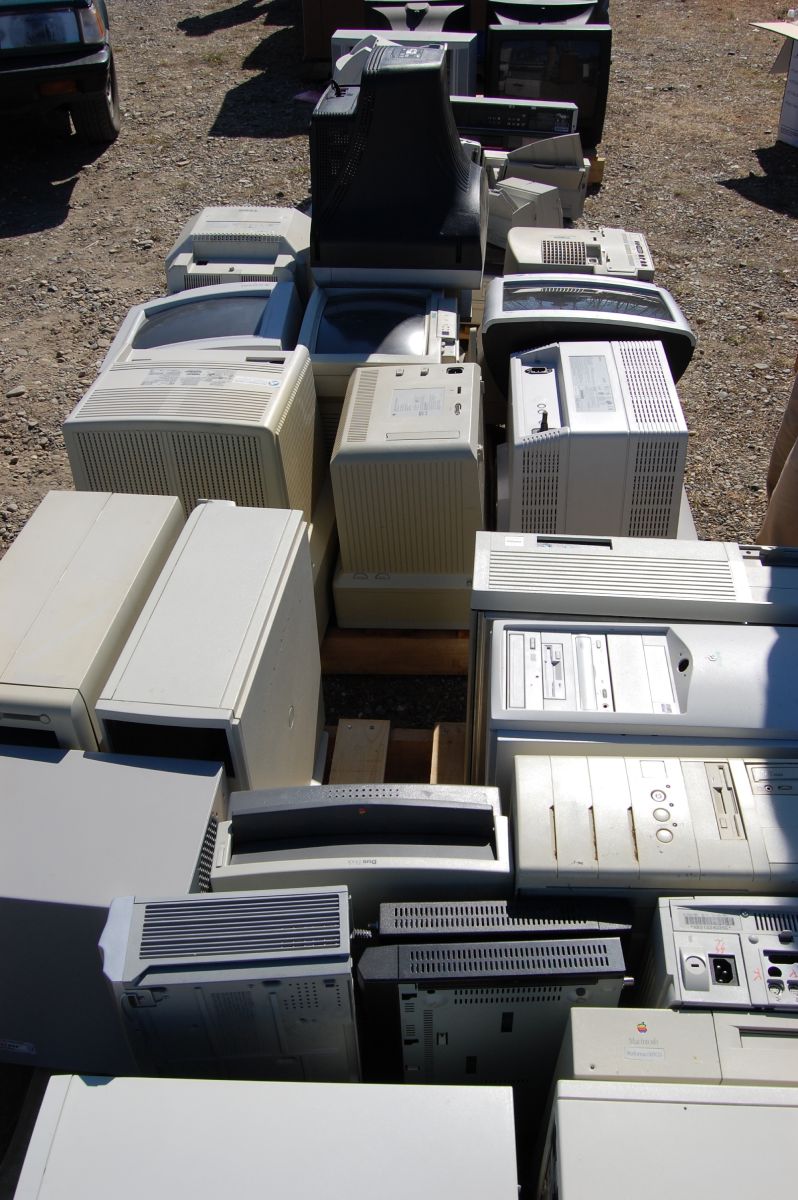
Throughout this blog post, we have explored the detrimental effects of improper e-waste disposal on the environment and highlighted the importance of recycling and responsible disposal practices. E-waste contributes to soil, water, and air pollution, releases hazardous substances that pose health risks to humans and ecosystems, and contributes to climate change by releasing greenhouse gases.
To combat these environmental challenges, it is essential to prioritize e-waste recycling. Recycling electronic waste offers numerous benefits. It conserves valuable resources, reduces the need for raw material extraction, and minimizes energy consumption and greenhouse gas emissions associated with producing new devices. Additionally, proper e-waste recycling helps prevent the release of hazardous substances into the environment, protecting human health and ecosystems.
Responsible disposal options for e-waste include donating and reusing electronics, utilizing certified e-waste recyclers and drop-off locations, and participating in manufacturer take-back programs. These options ensure that electronic devices are handled by trained professionals who can extract valuable materials for recycling while safely managing hazardous components.
Legislation and policy play a crucial role in e-waste management. Governments worldwide are implementing regulations to govern e-waste disposal and promote extended producer responsibility. International agreements and initiatives also drive collective efforts to tackle the global e-waste crisis.
Promoting awareness and education is critical to encouraging responsible e-waste disposal practices. Educating the public about the environmental impact of e-waste and providing resources for proper disposal, individuals can make informed choices and actively contribute to a sustainable future.
Corporate responsibility is vital in addressing e-waste. Businesses can implement initiatives for responsible e-waste disposal, integrate sustainable procurement practices, and collaborate with recyclers to establish efficiently and environmentally friendly processes.
Looking to the future, advancements in e-waste recycling technologies hold great promise. Improved sorting and separation techniques and innovative methods for metal extraction from e-waste contribute to more efficient and resource-efficient recycling processes. Furthermore, adopting a circular economy approach that emphasizes durability, repairability, and recyclability can help minimize e-waste generation and maximize resource recovery.
To achieve a sustainable and greener future, a collective effort is required. Individuals, businesses, and policymakers must work together to promote responsible e-waste disposal, support recycling initiatives, and drive the adoption of circular economy principles. By taking these actions, we can mitigate the environmental impact of e-waste, preserve valuable resources, and safeguard the health of our planet for future generations.
In conclusion, let us commit to making responsible choices in managing our electronic waste, and together, we can make a positive and lasting impact on the environment.




